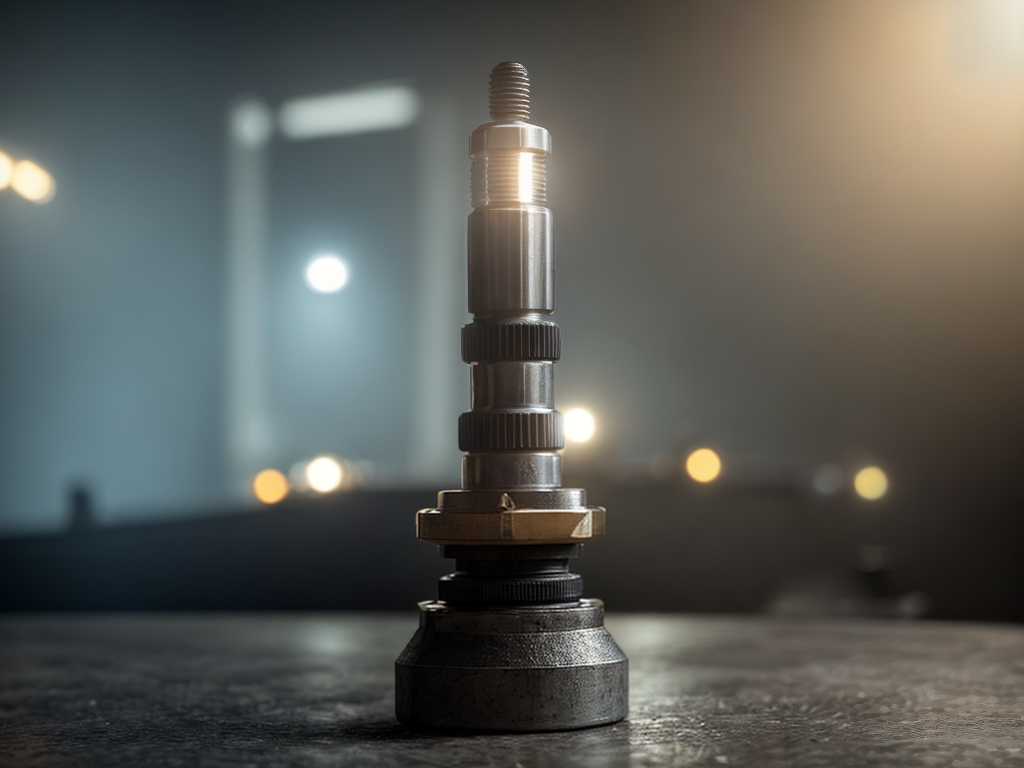
As I tighten the valve with my trusty wrench, I can’t help but appreciate the symbolism of torque – the invisible force that holds everything together. In the realm of valve maintenance, understanding the importance of torque is paramount. It is the key to ensuring optimal valve functionality, preventing leaks, and prolonging the lifespan of these critical components. But what happens when torque is insufficient or excessive? What are the consequences? In this discussion, we will explore the effects of torque on valve performance, delve into the potential pitfalls of improper torque application, and uncover the secrets to managing torque for optimal efficiency. So, let’s tighten our understanding of torque and unlock the secrets to maintaining valves with precision.
The Role of Torque in Valve Functionality
Torque plays a crucial role in the functionality of valves. It is the force that is applied to rotate or tighten the valve stem, allowing for the opening or closing of the valve. Proper torque is essential to ensure that valves operate effectively and safely.
To measure torque in valves, various techniques are used. One common method is the use of torque wrenches, which allow for precise measurement of the torque applied to the valve stem. Another technique involves the use of strain gauges, which measure the deformation caused by the torque on the valve stem.
Several factors affect the torque requirements of valves. One important factor is the size and type of the valve. Larger valves generally require higher torque to operate efficiently. The type of fluid being controlled by the valve also plays a role, as more viscous fluids may require higher torque for proper control.
In addition, the condition of the valve and its components can affect torque requirements. Valves that are poorly maintained or have worn out components may require higher torque to operate properly. It is important to regularly inspect and lubricate valves to ensure they function optimally and require less torque.
Understanding torque and its measurement techniques is crucial for maintaining and operating valves effectively. By considering the factors that affect torque requirements, valve operators can ensure that valves function reliably and efficiently, promoting the freedom of fluid control and minimizing the risk of valve failures.
Effects of Insufficient Torque on Valve Performance
Insufficient torque can negatively impact the performance of valves, leading to potential operational issues and compromised fluid control. Valve torque requirements play a crucial role in ensuring the proper functioning of valves. When the torque applied to a valve is insufficient, it can result in a variety of problems.
One of the main effects of insufficient torque is leakage. Valves are designed to create a tight seal to prevent fluid from escaping. However, if the torque applied to the valve is not enough, the seal may not be fully engaged, leading to leaks. These leaks can compromise the integrity of the fluid system, causing loss of efficiency and potential damage to equipment.
Insufficient torque can also lead to valve instability. Valves rely on the proper amount of torque to maintain their position and control the flow of fluid. When the torque is insufficient, the valve may not be able to stay in its intended position, resulting in erratic or unpredictable flow rates. This can lead to inefficient fluid control and potential damage to the system.
To prevent these issues, it is important to accurately measure and apply the required torque to valves. Torque measurement techniques, such as using torque wrenches or torque sensors, can help ensure that the proper amount of torque is applied. Regular maintenance and inspection of valves can also help identify and address any issues related to insufficient torque.
Consequences of Excessive Torque in Valve Maintenance
Excessive torque in valve maintenance can have serious consequences. It can lead to damaged valve components, such as seals, gaskets, and threads, which can result in leaks and inefficiencies. These issues can compromise the overall performance and reliability of the valve system, potentially leading to costly repairs and downtime.
Damaged Valve Components
Damaging valve components can occur as a result of applying excessive force during valve maintenance. When torque is not properly managed, it can lead to various issues that compromise the functionality and reliability of the valve. Here is a table highlighting some of the common damaged valve components caused by excessive torque:
| Damaged Valve Components | Consequences |
|---|---|
| Valve stem | Bent or sheared off |
| Valve seat | Deformation or cracking |
| Valve disc | Warping or breaking |
| Valve body | Cracking or leakage |
| Valve bonnet | Distortion or failure |
It is crucial to understand the importance of proper torque management to prevent these damages. By following recommended torque values and using calibrated torque wrenches, the risk of damaging valve components can be minimized. Regular inspections and maintenance also play a vital role in ensuring the longevity and performance of valves. Remember, a well-maintained valve is key to maintaining efficient operations and preventing costly downtime.
Leaks and Inefficiencies
When torque is not properly managed during valve maintenance, it can result in leaks and inefficiencies that compromise the functionality and reliability of the valve. Excessive torque can lead to the development of leaks, which can cause a variety of issues. Fluctuating pressure within the valve can cause the seals and gaskets to degrade over time, leading to leaks. These leaks can result in a loss of fluid or gas, reducing the efficiency of the valve and potentially leading to system failure. In addition, excessive torque can also contribute to corrosion on the valve components. Corrosion prevention is essential for maintaining the integrity of the valve, as corrosion can weaken the structure and further contribute to leaks and inefficiencies. Therefore, it is crucial to carefully manage torque during valve maintenance to prevent these problems and ensure optimal valve performance.
Importance of Proper Torque Application in Preventing Leaks
When it comes to preventing leaks in valve maintenance, proper torque application is crucial. By applying the correct amount of torque, we can ensure that the valve is tightly sealed and there are no gaps for leakage. It is important to use the proper tightening techniques to achieve the desired torque, preventing any potential leaks from occurring.
Torque for Leak Prevention
Proper torque application is crucial in preventing leaks. When it comes to maintaining valves, ensuring the correct amount of torque is applied is essential to prevent leaks and ensure the integrity of the system. Here are two key reasons why torque measurement and calibration are vital in leak prevention:
-
Accurate torque measurement: By using proper torque measurement tools, such as torque wrenches or torque sensors, you can ensure that the desired torque is applied consistently. This helps to prevent under or over-tightening, both of which can lead to leaks.
-
Regular torque calibration: Over time, torque tools can lose their accuracy due to wear and tear or environmental factors. Regular calibration of torque tools ensures that they remain accurate and reliable, allowing for precise and consistent torque application to prevent leaks.
Proper Tightening Techniques
To prevent leaks, it is crucial to apply torque properly using the appropriate tightening techniques. Proper tightening ensures that the valve components are securely fastened, preventing any potential leaks. This not only helps maintain the integrity of the system but also reduces the risk of costly valve maintenance in the long run.
To achieve proper tightening, it is essential to use torque measurement tools. These tools provide accurate readings of the applied torque, ensuring that it is within the recommended range. Over-tightening can lead to damaged components, while under-tightening can result in leaks. By using torque measurement tools, you can achieve the optimal torque required for each valve, minimizing the chances of leaks and avoiding unnecessary valve maintenance costs.
Torque’s Impact on Valve Reliability and Longevity
Torque plays a crucial role in ensuring the reliability and longevity of valves. Proper valve torque maintenance is essential for optimal valve function. Here are two key ways torque impacts valve reliability and longevity:
-
Prevents leaks: Applying the right amount of torque helps create a proper seal between the valve body and the valve seat. This prevents any leakage of fluid or gas, ensuring the valve operates efficiently and effectively. Insufficient torque can result in leaks and compromise the valve’s performance, leading to potential safety hazards and increased maintenance costs.
-
Avoids damage: Over-tightening or under-tightening valves can cause severe damage. Excessive torque can lead to valve seat deformation, gasket failure, or even valve stem breakage. On the other hand, insufficient torque may result in loose connections, leading to vibrations and potential valve failure. By using the correct torque specifications, valves can operate smoothly and avoid unnecessary wear and tear.
Valve torque maintenance directly impacts the function of valves and their ability to operate reliably over time. By ensuring proper torque application during installation and regular maintenance, valves can maintain their integrity and extend their lifespan. This reduces the risk of unexpected valve failures, downtime, and costly repairs.
Managing Torque for Optimal Valve Efficiency
With an understanding of how torque impacts valve reliability and longevity, it is important to explore the management of torque to achieve optimal valve efficiency. Managing torque for valve calibration is crucial in maintaining the performance and lifespan of valves. Proper torque management ensures that valves operate within their designed specifications, preventing potential malfunctions and failures.
Valve calibration involves adjusting the torque applied to the valve stem to achieve the desired opening and closing characteristics. This process is essential for optimizing valve efficiency and ensuring accurate flow control. By carefully managing torque, operators can achieve precise control over the valve’s position, allowing for efficient and accurate regulation of fluid flow.
Furthermore, torque management plays a significant role in extending the lifespan of valves. Applying excessive torque can lead to premature wear and tear, causing damage to the valve components and reducing its overall durability. On the other hand, insufficient torque can result in leakage and improper sealing, compromising the valve’s performance and potentially leading to costly repairs or replacements.
To effectively manage torque for optimal valve efficiency, regular maintenance and monitoring are essential. This includes periodic torque checks, adjustments, and recalibrations to ensure that the valves are operating within their specified torque ranges. Additionally, it is crucial to use appropriate torque measurement tools and techniques to achieve accurate and consistent results.


